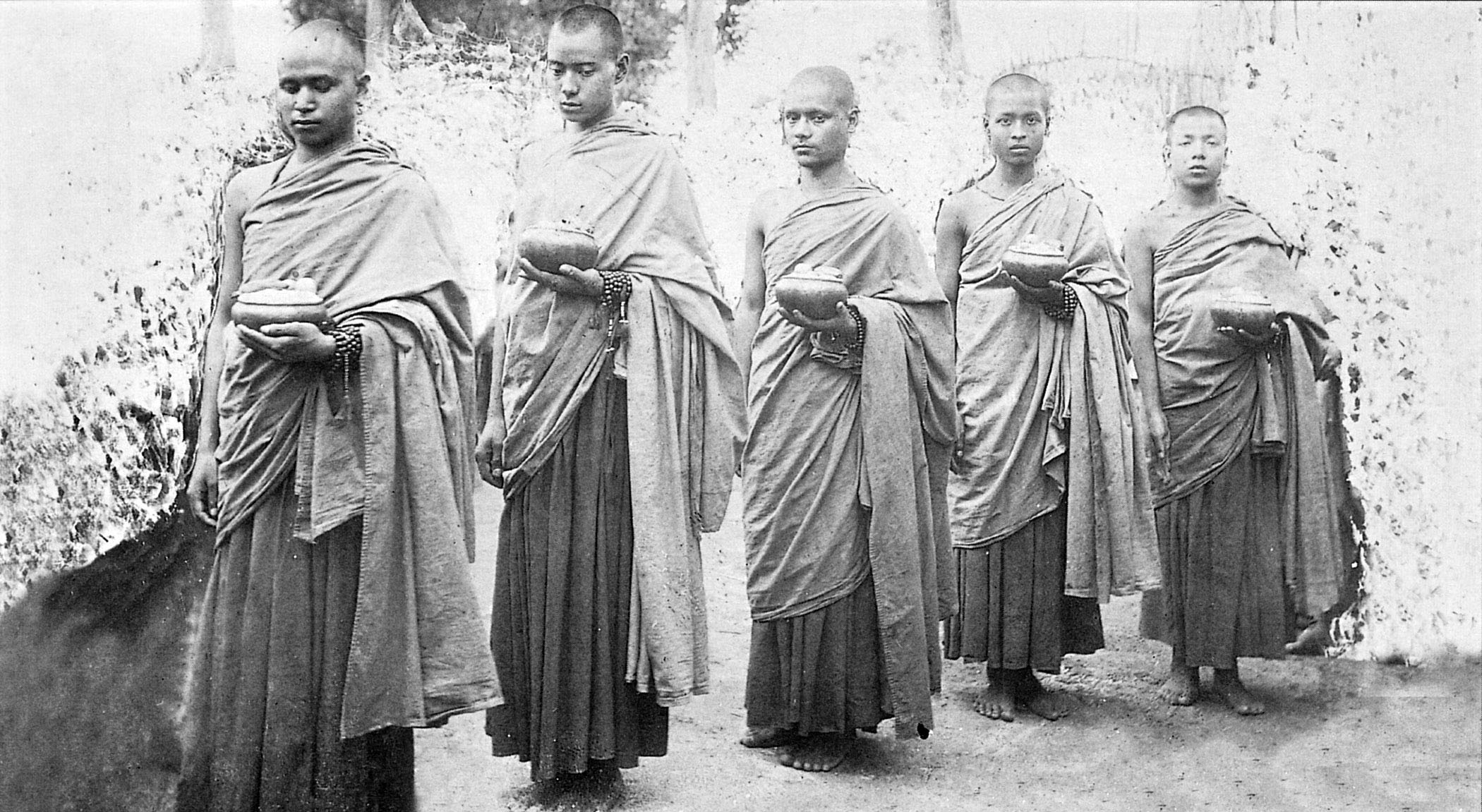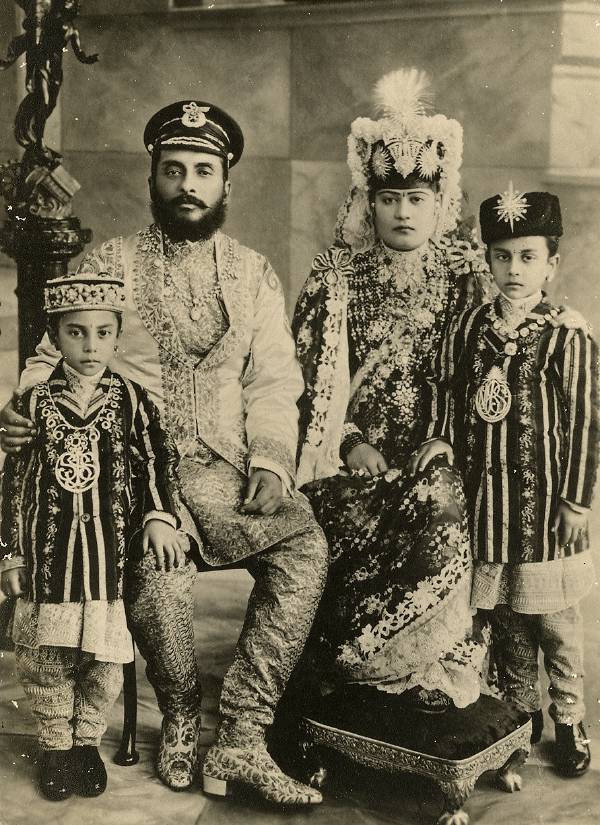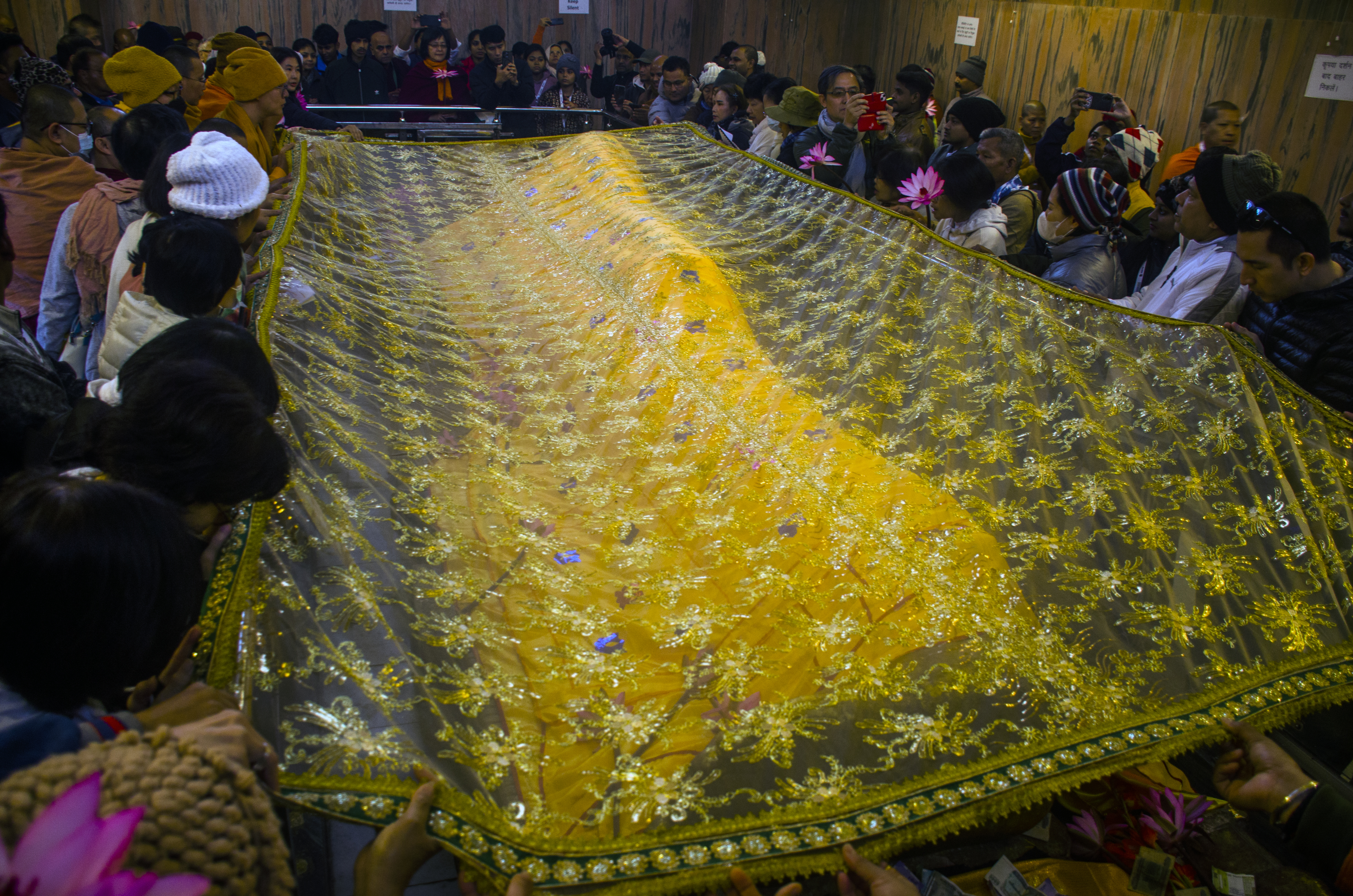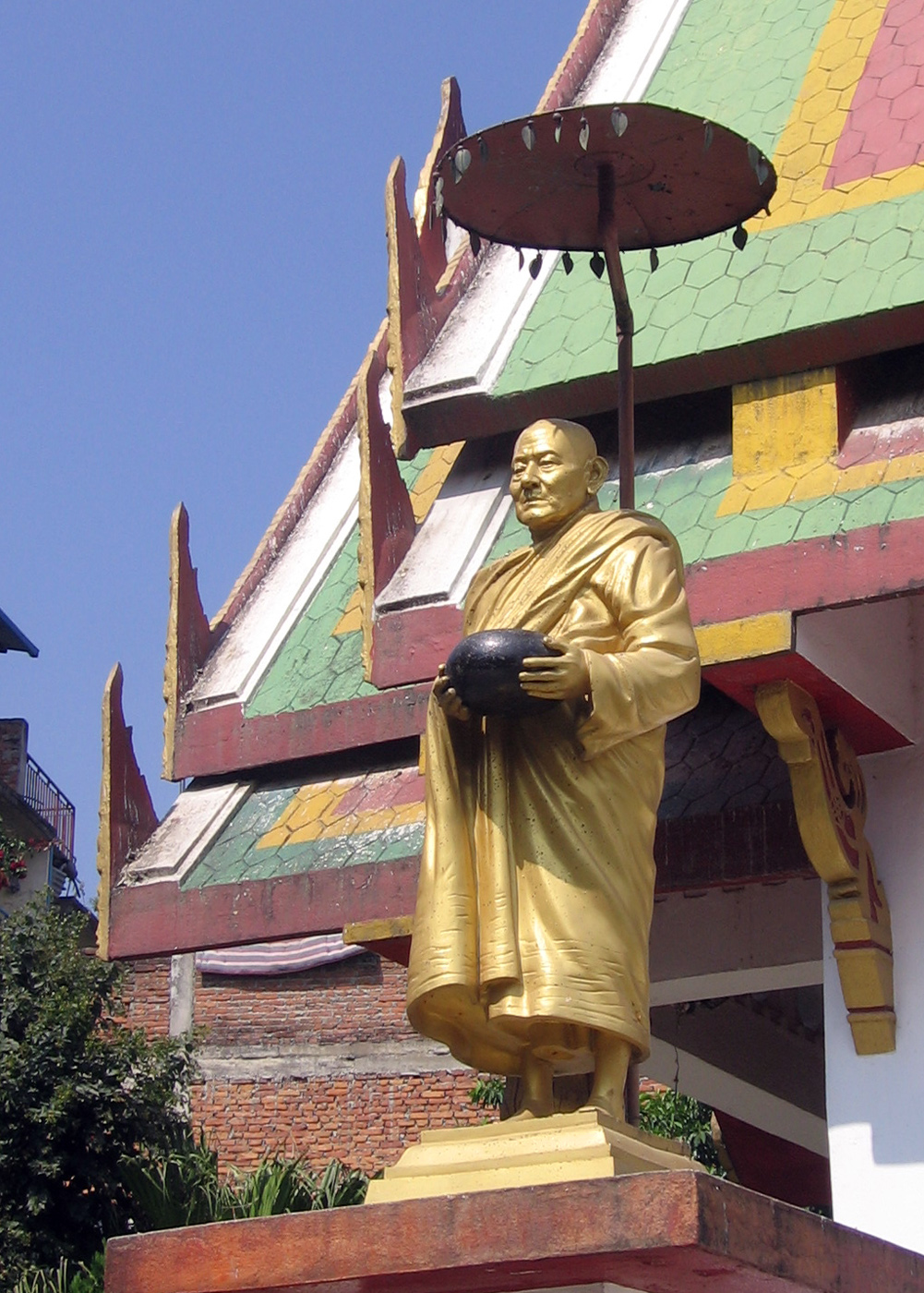|
Banishment Of Buddhist Monks From Nepal
The banishment of Buddhist monks from Nepal was part of a campaign by the Rana government to suppress the resurgence of Theravada Buddhism in Nepal in the early 20th century. There were two deportations of monks from Kathmandu, in 1926 and 1944. The exiled monks were the first group of monks to be seen in Nepal since the 14th century. They were at the forefront of a movement to revive Theravada Buddhism, which had disappeared from the country more than five hundred years before. Newar Buddhism is traditionally Vajrayana based. The Rana dynasty disapproved of Buddhism and the Newar language. It saw the activities of the monks and their growing following as a threat. When police harassment and imprisonment failed to deter the monks, all of whom were Newars, they were deported. Among the charges made against them were preaching a new faith, converting Hindus, encouraging women to renounce and thereby undermining family life, and writing books in Newari. Expulsion of 1926 I ... [...More Info...] [...Related Items...] OR: [Wikipedia] [Google] [Baidu] |
Chandra Shumsher JBR
Field-Marshal His Highness Maharaja Sri Teen Chandra Shumsher Jung Bahadur Rana (8 July 1863 – 26 November 1929) was the Prime Minister of Nepal from the Rana dynasty. He served in this capacity from 27 June 1901 to his death in 1929 after he successfully deposed his liberal and reformist brother Dev Shamsher. Although generally perceived as despotic and conservative, he is credited with several reforms including the abolition of slavery and establishing the Nepal-Britain Treaty of 1923, which recognised Nepal as an independent nation and an ally of Britain. Family and early life Chandra Shumsher was the sixth of the seventeen sons of Dhir Shumsher Rana (the youngest brother of the Rana dynasty founder Jung Bahadur Rana) through his Thapa wife Nanda Kumari, of whom he was the third son. He was educated in Kolkata and thus became the first Nepalese Prime Minister who had passed matriculation examination. In the convocation address of 1884, the Vice Chancellor of Calcutta ... [...More Info...] [...Related Items...] OR: [Wikipedia] [Google] [Baidu] |
Bhaju Ratna Kansakar
Bhāju Ratna Kansakār () (1882 in 20 December 1956) was a Nepalese trader and philanthropist who laid the foundations of the Jyoti Group, one of the largest business and industrial houses in Nepal. He was also an important figure in the revival of Theravada Buddhism in the country when it was being suppressed by the state. Biography Early life Bhaju Ratna was born in Kathmandu, the third of four sons of father Kulbir Singh and mother Nanibeti Kansakar. His ancestral home was located at Kel Tol, a business and ceremonial neighborhood in central Kathmandu. Its most important landmark is the temple of Jana Baha Dyah, which is known in Sanskrit as Aryavalokitesvara (Sacred Avalokiteśvara). Bhaju Ratna never went to school, and taught himself to read and write. The Kansakars were engaged in the hereditary occupation of making bronze, brass and copper household utensils. Bhaju Ratna started out working at a relative's workshop in Darjeeling, India in 1898. Returning to Kathman ... [...More Info...] [...Related Items...] OR: [Wikipedia] [Google] [Baidu] |
Sri Lanka
Sri Lanka, officially the Democratic Socialist Republic of Sri Lanka, also known historically as Ceylon, is an island country in South Asia. It lies in the Indian Ocean, southwest of the Bay of Bengal, separated from the Indian subcontinent, Indian peninsula by the Gulf of Mannar and the Palk Strait. It shares a maritime border with the Maldives in the southwest and India in the northwest. Sri Jayawardenepura Kotte is the legislative capital of Sri Lanka, while the largest city, Colombo, is the administrative and judicial capital which is the nation's political, financial and cultural centre. Kandy is the second-largest urban area and also the capital of the last native kingdom of Sri Lanka. The most spoken language Sinhala language, Sinhala, is spoken by the majority of the population (approximately 17 million). Tamil language, Tamil is also spoken by approximately five million people, making it the second most-spoken language in Sri Lanka. Sri Lanka has a population of appr ... [...More Info...] [...Related Items...] OR: [Wikipedia] [Google] [Baidu] |
Bhutan
Bhutan, officially the Kingdom of Bhutan, is a landlocked country in South Asia, in the Eastern Himalayas between China to the north and northwest and India to the south and southeast. With a population of over 727,145 and a territory of , Bhutan ranks List of countries and dependencies by area, 133rd in land area and List of countries and dependencies by population, 160th in population. Bhutan is a Democracy, democratic constitutional monarchy with a King of Bhutan, King as the head of state and a Prime Minister of Bhutan, prime minister as the head of government. The Je Khenpo is the head of the state religion, Vajrayana Buddhism. The Himalayas, Himalayan mountains in the north rise from the country's lush subtropical plains in the south. In the Mountains of Bhutan, Bhutanese Himalayas, there are peaks higher than above sea level. Gangkhar Puensum is Bhutan's highest peak and is the highest unclimbed mountain in the world. The wildlife of Bhutan is notable for its diversi ... [...More Info...] [...Related Items...] OR: [Wikipedia] [Google] [Baidu] |
Sarnath
Sarnath (also known as Deer Park, ''Sarangnath'', ''Isipatana Deer Park'', ''Rishipattana'', ''Migadaya'', or ''Mrigadava'')Gabe Hiemstra, "Buddha Chronicle 24: Kassapa Buddhavaṃsa". ''Wisdom Library'', 14 September 2019. is a town northeast of Varanasi, in Uttar Pradesh, India. As the '' Lalitavistara'' sutra states, the Gautama Buddha chose ''"Deer Park by the Hill of the Fallen Sages, outside of Varanasi"'' for his first teaching after he attained enlightenment Samye Translations, "Sarnath: The First Turning of the Dharma Wheel", ''Nekhor: Circling the Sacred'' in Bodh Gaya. The teaching is entitled Dhammacakkappavattana sutra. Sarnath is one of the eight most important pilgrimage sites for Buddhists, and has been nominated to become a UNESCO World Heritage Site. Sarnath is where Gautama Buddha's ''sangha'' first convened, when he gave the first teaching to the Buddha's original five disciples Kaundinya, Assaji, Bhaddiya, Vappa and Mahanama, known as ''The First T ... [...More Info...] [...Related Items...] OR: [Wikipedia] [Google] [Baidu] |
Kushinagar
Kushinagar (Pali: ; Sanskrit: ) is a town in the Kushinagar district in Uttar Pradesh, India, east of Gorakhpur on National Highway 27, Kushinagar is a Buddhist pilgrimage site, where Buddhists believe Gautama Buddha died. Etymology According to Alexander Cunningham, Kushinagara was named for the abundance of the kusha grass found in this region. History Iron Age Buddha's death When the Buddha reached his eightieth year, according to the '' Mahāparinibbāṇa Sutta'' ( Sutta 16 of the ''Dīgha Nikāya''), he and some of his disciples undertook a months-long journey from Rājagṛha, through Pāṭaliputta, Vesāli, Bhoganagara, and Pāvā, to their final destination at Kushinagar. At Pāvā Cunda, a resident, invited the group to a meal that featured a food called ''sukaramaddava''. Buddha was afflicted by a painful illness resembling dysentery soon after eating it. After the meal, the Buddha crossed the Kakkuttha River (now called the Khanua River) and compl ... [...More Info...] [...Related Items...] OR: [Wikipedia] [Google] [Baidu] |
Juddha Shumsher Jang Bahadur Rana
Field Marshal Shri Shri Shri Maharaja Sir Juddha Shumsher Jung Bahadur Rana () GCB GCSI GCIE (19 April 1875 in Narayanhity Palace, Kathmandu – 20 November 1952 in Dehradun, India) was the Prime Minister of Nepal from 1 September 1932 to 29 November 1945 as the head of the Rana dynasty. He was the Field marshal and Maharaja of Lamjung and Kaski. He is credited for rebuilding the Dharahara which was destroyed by the 1934 Nepal–Bihar earthquake. Early life Juddha Shumsher Jung Bahadur Rana was born on 19 April 1875 at the Narayanhiti Palace in Durbar Marg, Kathmandu to Dhir Shumsher Rana and Juhar Kumari Devi. Rana was born into a noble Hindu Chhetri family, his father Dhir Shamsher, was the youngest brother of Jung Bahadur Rana who started the Rana dynasty, and his mother belonged to a noble Rajput family from Kangra. He was made colonel by Jung Bahadur during his Annaprashana ceremony which marks an infant's first intake of food other than milk. At th ... [...More Info...] [...Related Items...] OR: [Wikipedia] [Google] [Baidu] |
Kumar Kashyap Mahasthavir
Bhante Kumar Kashyap Mahasthavir () (born Asta Man Shakya) (24 July 1926 – 26 February 2012) was a Nepalese Buddhist monk who was awarded the title of Tripitakacharya (Tripitaka Master). In 1944, he was expelled from Nepal by the Rana dynasty, Rana regime for promoting Theravada Buddhism and writing in Nepal Bhasa. He spent his exile in India and Sri Lanka. Early life Kumar Kashyap (alternative name: Kumar Bhante) was born in Tansen, Nepal, Tansen, Palpa District, Palpa, a district in western Nepal. His father was Sanat Kumar Shakya and mother Tej Maya Shakya. He was known as Asta Man Shakya before he became a novice monk in 1942.Bajracharya, Phanindra Ratna (2003). ''Who's Who in Nepal Bhasha.'' Kathmandu: Nepal Bhasa Academy. . Page 75. After being ordained, Kumar Bhante moved to Kathmandu where he joined the small number of monks and worked to promote Theravada Buddhism. Into exile The government was suspicious of the activities of the Buddhist monks as they were becoming i ... [...More Info...] [...Related Items...] OR: [Wikipedia] [Google] [Baidu] |
Dhammalok Mahasthavir
Dhammalok Mahasthavir () (born Das Ratna Tuladhar) (16 January 1890 – 17 October 1966) was a Nepalese Buddhist monk who worked to revive Theravada Buddhism in Nepal in the 1930s and 1940s. For this act, he was expelled from the country by the tyrannical Rana regime. Dhammalok was also a writer who contributed to the Nepal Bhasa renaissance. He worked to promote Theravada Buddhism and Nepal Bhasa braving government persecution. Early life Dhammalok (alternative names: Bhikkhu Dhammalok Mahathero, Dharmaloka) was born Das Ratna Tuladhar at Asan Dhalasikwa, Kathmandu to a trading family. His father was Kesh Sundar and his mother Bekha Laxmi Tuladhar. Das Ratna engaged in business in Tibet during his early years and was known by the nickname Baran Sahu (बारां साहु). He was married to Dibya Laxmi with whom he had two sons and a daughter. Grief at the death of his wife and his association with Mahapandit Rahul Sankrityayan of India drew him towards religion ... [...More Info...] [...Related Items...] OR: [Wikipedia] [Google] [Baidu] |
Pragyananda Mahasthavir
Pragyananda Mahasthavir () (born Kul Man Singh Tuladhar) (2 May 1900 – 11 March 1993) was a Nepalese Buddhist monk who was one of the leaders of the revival of Theravada Buddhism in Nepal. In 1930, he became the first monk wearing yellow robes to be seen in Kathmandu since the 14th century.LeVine and Gellner (2005), p. 45. Pragyananda served Buddhism and wrote religious literature in Nepal Bhasa when both the religion and language were being suppressed by the autocratic Rana regime. For these offenses, he was expelled from the country. Pragyananda also became the first Sangha Mahanayaka (Patriarch) of Nepal in modern times. Page 10. Early life Pragyananda was born in Itum Bahal, Kathmandu to a family of herbalists. His father was Harsha Bir Singh and his mother was Mohan Maya Tuladhar. Pragyananda's given name was Kul Man Singh Tuladhar. He was educated at Durbar High School in Kathmandu. After high school, he pursued further studies in Ayurvedic medicine and joined his a ... [...More Info...] [...Related Items...] OR: [Wikipedia] [Google] [Baidu] |
Tibet
Tibet (; ''Böd''; ), or Greater Tibet, is a region in the western part of East Asia, covering much of the Tibetan Plateau and spanning about . It is the homeland of the Tibetan people. Also resident on the plateau are other ethnic groups such as Mongols, Monpa people, Monpa, Tamang people, Tamang, Qiang people, Qiang, Sherpa people, Sherpa, Lhoba people, Lhoba, and since the 20th century Han Chinese and Hui people, Hui. Tibet is the highest region on Earth, with an average elevation of . Located in the Himalayas, the highest elevation in Tibet is Mount Everest, Earth's highest mountain, rising above sea level. The Tibetan Empire emerged in the 7th century. At its height in the 9th century, the Tibetan Empire extended far beyond the Tibetan Plateau, from the Tarim Basin and Pamirs in the west, to Yunnan and Bengal in the southeast. It then divided into a variety of territories. The bulk of western and central Tibet (Ü-Tsang) was often at least nominally unified under a ser ... [...More Info...] [...Related Items...] OR: [Wikipedia] [Google] [Baidu] |









